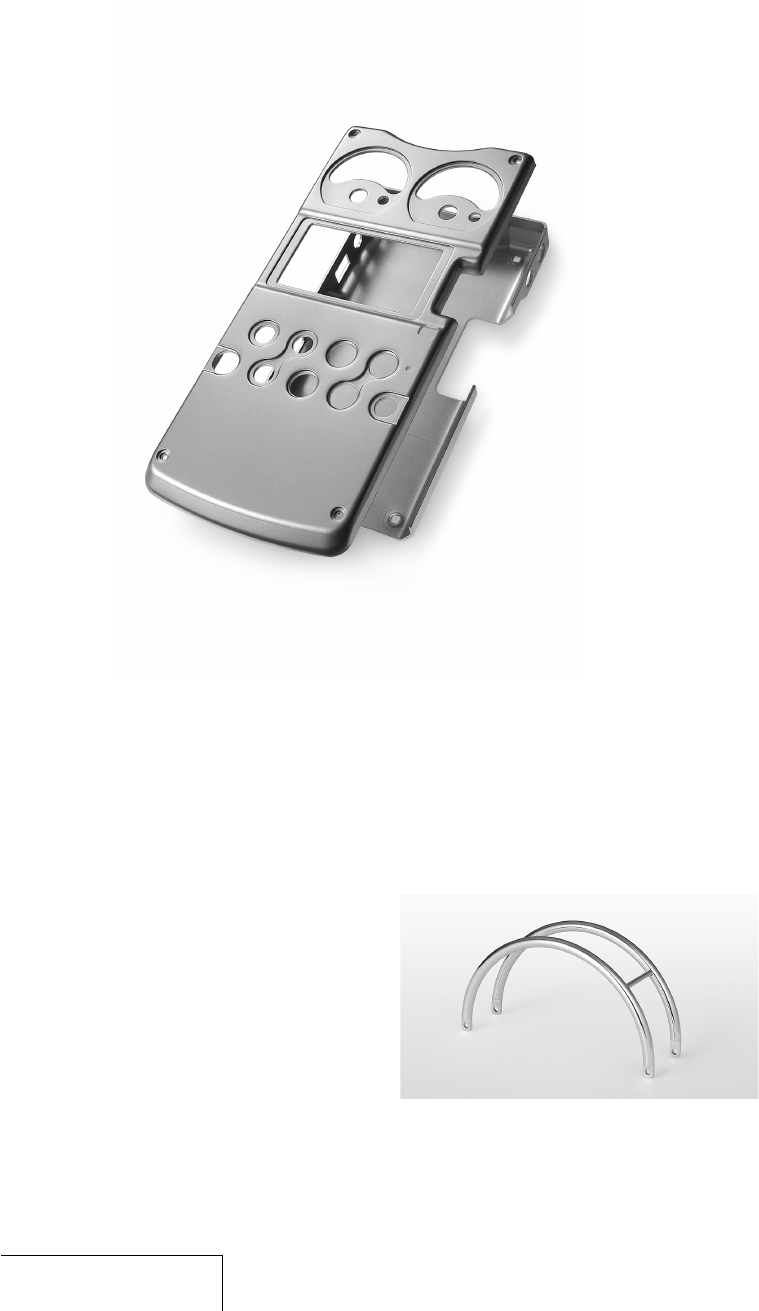Overview (continued)
Exterior
—
Increase rigidity
The electrical circuits are protected by a
body made of 1 mm thick pure titanium. By
means of a pressing process called
“drawing,” titanium is shaped into a box to
achieve a body rigidity that cannot be
obtained through bending or using pressed
aluminum. The use of drawn titanium
minimizes resonance, which tends to occur
when the body comes into contact with
acoustic energy.
The surface of pure titanium material
undergoes a process that increases the
hardness of the material. The surface is then
covered with ion plating (a nitrate titanium
coating that is resistant to scratches). The
finished titanium surface is approximately ten
times as hard as that of alumite treated
aluminum.
The distinctive arch-shaped frame
(microphone guard) protects the built-in
microphone units against impact damage
when dropped. Exhaustive tests were carried
Front/back panels
(1 mm thick pressed titanium)
out seeking a form and material that were
rugged enough without obstructing sound.
The final choice: stainless steel rods
(SUS316), 3 mm in diameter, bent into the
shape of the frame and hand polished by
skilled craftsmen.
The rugged exterior produced in this way
protects the circuits and microphones and
enhances the high recording quality of
PCM-D1.
Microphone guard (SUS316 stainless steel rod)
12
PCM-D1. US. 2-664-971-11(1)
